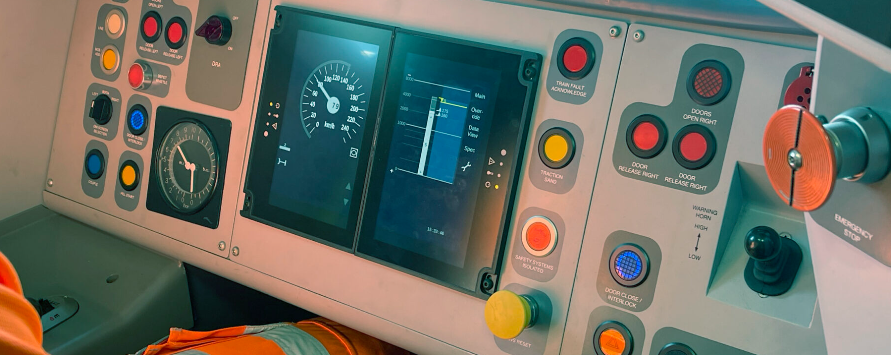Another step forward has been taken towards the introduction of digital in-cab signalling to the East Coast Main Line with the completion of dynamic ETCS (European Train Control System) testing for key trains in both the passenger and freight sector.
Porterbrook’s Class 387/1 Electrostar 387101, operated by Govia Thameslink Railway’s Great Northern, and DB Cargo’s Class 66 loco 66039 have successfully completed their testing across a range of operational scenarios.
Each train is the First in Class (FiC) for their respective fleets – the Class 387 is part of the Electrostar family of commuter units widely used in South East England, and the Class 66 is Britain’s principal freight fleet.
The dynamic testing, done at Network Rail’s Rail Innovation and Development Centre (RIDC) in Melton, forms a vital stage in the preparations for these fleets operating with digital signalling as part of the East Coast Digital Programme (ECDP) and subsequent ETCS deployments.
The process has involved close collaborative working between Network Rail, Govia Thameslink Railway (GTR), Porterbrook, DB Cargo and their respective on-board equipment providers, Alstom (for Class 387) and Siemens Mobility (for Class 66).
Both trains will now go through a process of accumulating fault-free running mileage as the next stage in the approvals process.
Ed Akers, Network Rail’s Industry Partnership Director for ECDP, said: “This is significant progress with two strategically important fleets. Our partners have worked hard on both these projects to get to this point – those efforts will provide ongoing benefits with durable designs for key fleets. Preparing all the fleets is ECDP’s biggest challenge, but the facilities at RIDC are helping us take big steps forward toward a digital future.”
Ben Ackroyd, Chief Operating Officer at Porterbrook, which owns the Class 387 Electrostar, said: “Porterbrook is pleased to be playing our part in supporting Network Rail and our industry partners with the delivery of the ECDP. Completing the dynamic testing of these FiC units is an important milestone that can be directly attributed to the hard work and close collaboration of all those involved with this complex project.”
Aaron Meakin, GTR’s Senior Programme Delivery Manager for ERTMS, said: “Completing dynamic testing is a huge achievement. The Class 387 will be the country’s first major commuter fleet to have this technology retrofitted, and we’re looking forward to completing the work to the remaining 28 units at our depot in Hornsey, north London.”
David Maddison, Digital and Integrated Systems Regional Director, Alstom, said: “We are proud to have provided the cutting-edge technology and expertise necessary to retrofit the Class 387 fleet, paving the way for a new era of safer, more efficient and sustainable rail travel.
Working with partners across the industry, Alstom is committed to advancing the digital rail revolution, ensuring that passengers and freight operators alike benefit from enhanced performance and reliability.”
Neil Ethell, Chief Operating Officer, DB Cargo UK, said: “The completion of 66039’s dynamic testing at RIDC marks another significant milestone for freight and the programme. A lot of hard work has gone into getting us to this point, so I’d like to recognise and thank our colleagues at DB Cargo, Siemens, and RIDC for their dedication and professionalism during dynamic testing.
We’re incredibly proud to be undertaking the first in class fitment of a Class 66 and we’re excited to see how it performs in the next phase of testing as it accumulates 5,000 miles of fault-free running as part of the approvals process.”
Rob Morris, Joint CEO of Siemens Mobility said: “The successful completion of dynamic testing is a significant milestone in our journey to bringing innovative digital signalling to the East Coast Main Line and beyond. This achievement not only underscores the robustness and reliability of our technology but also highlights the exceptional collaboration among our industry partners.”
